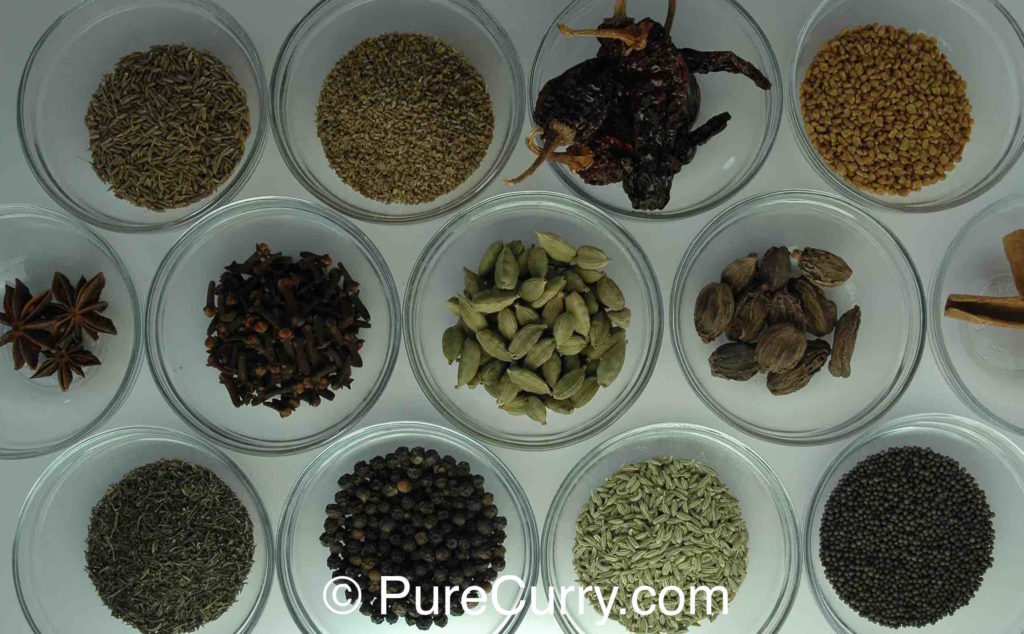
It’s no secret that spices are an essential ingredient to bring a dish to life by adding flavors to make it delicious, and aromas to make the eating experience both appetizing and satisfying. This post includes detailed information on getting the most out of spices by explaining the how and why of using spices in cooking and providing key aspects on some essential spices.
Storing Spices
To get best results, spices should be used while they still have their aroma, flavor and potency. Spices can be kept for a long time if they are stored in an airtight jar and placed in a cool, dark place; no refrigeration is needed. Whole spices retain their potency for much longer compared to ground spices. Generally the shelf life of whole spices is two years whereas ground spices will last up to a few months because they rapidly start to lose their flavors and aroma.
TIP: If you’re not getting the results you expect from a recipe, one thing to check is the freshness of your spices. An easy test of the freshness of your spices is to take a small amount of the dried powder between your fingers and take a whiff. If it releases a lively aroma, it’s still good to go. If the aroma, and often the color, of the spice have faded, you need to discard it and use a fresh batch.
Grinding Spices
It is recommended to buy whole spices, and then grind small quantities as needed. This is especially useful if you do not cook often with spices. So rather than purchasing ground Coriander Powder or ground Cumin Powder, you can buy the whole seeds and grind them as needed. Grinding spices releases the volatile compounds that give a spice its flavor and aroma. Once you grind spices, they release their oils, so they should be used up soon. Fresh grinding spices is a cinch with a pestle and mortar or an electric spice grinder — both work equally well. Be sure to use the grinder exclusively for spices, to avoid confusing the flavor of the spices with other flavors, such as that of coffee. Also, a wide pestle and mortar is a better option, since it is easier to grind the spices well due to the wider grinding motion of the pestle.
TIP: Certain spices, such as Cumin Seeds and Coriander Seeds, are toasted to give them a slightly smoky flavor. However, light toasting removes excess moisture in the spices, making them crisp and easy to grind, which is especially useful if you’re using a pestle and mortar.
Cooking with Spices
When cooking with spices, some of the techniques that are used to extract their flavors are described below.
Blooming involves briefly frying the spices in oil and aromatics (such as ginger, garlic, onions, etc.) until they are fragrant, usually for about 30 seconds. This process allows for the aroma chemicals of each spice to react and create a unified flavor. Also, adding spices to cooking oil will distribute their flavor much more efficiently in the prepared dish, compared to either adding them to the sauce or mixing them in at the end. Ground spices can burn fairly quickly, so reduce the heat when you add them to the oil, and keep an eye on them once they are added to the oil, to ensure that they do not get scorched. For instance, Cumin Seeds can be added to hot oil at the start of a preparation. In this step, I keep the oil at medium low, and once the seeds start to sizzle, after adding the next ingredients, I mix them in right away to prevent the seeds from getting burned. If the cumin seeds turn black, they’re going to give the dish a slightly bitter taste. As you cook more often, you’ll develop your own tricks that are appropriate for a recipe.
Tempering, often referred to in recipes by its Hindi word tadka, involves quickly frying spices in Ghee or Oil, and then pouring the flavored Ghee or Oil along with the spices on top of a cooked dish as a final garnish. Tadka may be added to a dish that has already been cooked in Oil with other spices to add an extra dash of flavor. The most common ingredients of a tadka include Curry Leaves, Mustard Seeds, Garlic, Ginger, Dried Chilies, Asafetida and Cumin Seeds.
Toasting spices in a dry skillet enhances the flavor of spices, which takes about 1 to 3 minutes for ground spices, and between 3 to 5 minutes for whole spices. The toasting process evaporates the inner moisture of the spices, at which point they start to brown. Toast spices at medium heat until fragrant; if you’re a newbie at toasting spices, toast them at low heat the first few times, until you get comfortable with the process. Stir for even toasting and to prevent scorching. When the spices start to release their aroma, which is hard to miss, immediately remove from hot skillet to prevent carryover cooking. If toasting a larger quantity then spread them on a plate; for smaller quantities, you can put them directly into the grinder or mortar.
Controlling the Intensity of the Flavor
The intensity of the flavor depends on the quantity used, whether it is being used whole or in ground form, and when it is added in the cooking process. Spices when used whole, are typically added at the beginning of the cooking process; when used in their ground form, they are added later in the cooking process. Ground spices release their flavor faster because of the greater exposed surface area of their body in contact with the surrounding ingredients. Also, finely ground spices release their flavor faster than coarsely ground spices. These are just some things to keep in mind when following a recipe, or when you decide to get creative with spices.
A Glossary of Common Spices
These are some of the spices that you’ll see used in the recipes at Pure Curry.
Ajwain
Ajwain Seeds, also known as Carom Seeds, belong to the same family as cumin and parsley and their taste is somewhat similar to thyme. In Indian Cuisine they are used to flavor deep-fried foods and vegetables. Ajwain also has digestive properties and is often added to Gram Flour (Besan).
Asafetida
Asafetida is a digestive and anti-flatulent; it has a foul smell (notice the “fetid” in the name?) and an unpleasant flavor when raw. It must be cooked in hot fat/oil before being mixed into the dish. When cooked, the strength of its flavor and aroma reduces. Recipes that call for Asafetida, typically also call for ginger and/or garlic and green chillies. It has an onion/garlic flavor and is often used as a substitute for onion and garlic. Conversely, onion and garlic powders can be used as a substitute for Asafetida. TIP: Use Asafetida sparingly, it’s purpose is to add an underlying note to complement the flavors of the other spices. It should never dominate the flavors of other spices.
Bay Leaves
These leaves provide a delicious aroma and are often used in rice and meat dishes. The leaves are discarded during or after cooking is completed; leave them in the rice dish for presentation, and they can easily be picked out when serving.
Cumin Seeds and Cumin Powder
Cumin is one of the most widely used spices in many cuisines. Cumin adds a smoky flavor to food, and Cumin Powder also acts as a thickener for sauces. In addition, it also has digestive and anti-microbial properties. Cumin Seeds should be toasted or heated in oil to bring out their flavor. Cumin is a key ingredient in the spice blends Garam Masala and Chaat Masala. Roasted Cumin Powder is often sprinkled on top of Chaats, Yogurt and Fruit Salads to add flavor.
Curry Leaves
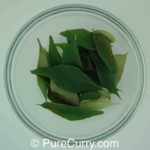 Curry Leaves have a citrusy and nutty aroma and add a strong savory flavor to curries; they can be used fresh or dried. Curry Leaves can be stored for several months in a freezer and used as needed, or they can be dried and stored in an airtight container in a cool dry place for 6 months. It is recommended to use them fresh for best results. If you use Curry Leaves often, you may want to consider growing the plant at home. While it can grow into a tree in the right conditions, you can grow it as a plant indoors. TIP: It is a good idea to bruise curry leaves in your palms before adding to a preparation to release their flavors.
Curry Leaves have a citrusy and nutty aroma and add a strong savory flavor to curries; they can be used fresh or dried. Curry Leaves can be stored for several months in a freezer and used as needed, or they can be dried and stored in an airtight container in a cool dry place for 6 months. It is recommended to use them fresh for best results. If you use Curry Leaves often, you may want to consider growing the plant at home. While it can grow into a tree in the right conditions, you can grow it as a plant indoors. TIP: It is a good idea to bruise curry leaves in your palms before adding to a preparation to release their flavors.
Coriander Seeds and Powder
Coriander seeds are the dried seeds of the Cilantro plant, but they smell and taste very different and have different uses in recipes. They have a lemony note, and ground coriander has a thick, fibrous, dry husk and is therefore a good thickener for sauces. Coriander seeds are sometimes added whole in a recipe and are usually dry-roasted and ground and used as a powder.
When making curries, they are added in a larger quantity compared to other spice powders such as turmeric or red chili powder. This is because they have a mild taste and the larger quantities help to form the curry base with onions and/or tomatoes. Add Coriander Seeds and Powder later in the cooking process.
Cardamom
Cardamom is available as pods, which reveal the black seeds that hold most of the the flavor when opened. They are most commonly available in two varieties – Green and Black Cardamom. Green Cardamom is a fragrant spice that is spicy sweet, and flavors curries and desserts. Black Cardamom has a smoky, bacon-like flavor and is more suitable for savory dishes. You can buy Cardamom in pods or just the seeds, and they can be used whole or the seeds in ground form. Since the flavor of Cardamom is in its seeds, when adding the whole pods to a curry, crack the pods open to release the flavor. It is a key ingredient in many spice blends and lends a delectable aroma to rice dishes. Green Cardamom pods are still fresh and hold their flavor as long as they stay green. Once they begin to lose their green color, use them up quickly as they are starting to lose their flavor.
Cardamom is added early in the cooking process to allow the flavors to develop. When added whole, it adds a delicate flavor; for a stronger flavor, add the ground seeds. Cardamom is a key ingredient in Garam Masala and Chai Masala.
Cloves
Cloves are pungent and peppery. Ground cloves are potent and they are usually added whole. Cloves are used as an ingredient in Garam Masala and typically added to hot oil when cooking to release its flavor. They are used in sweet as well as savory dishes.
Cinnamon
Cinnamon is earthy and smoky and Cinnamon powder adds flavor and acts as a thickener. It is very fragrant and has a sweetness that suits sweet and savory dishes and is, therefore, used in desserts and curries. Cinnamon is also an ingredient in Garam Masala, which is often used to prepare meat dishes and provides a delicious aroma and flavor to the dishes.
Dried Mango Powder (Amchur)
Dried Mango Powder is made by grinding dried, green mangoes and has a tangy, sour taste. It is frequently used in vegetable preparations and in dishes that call for a tangy taste such as Chana Masala. Dried Mango Powder, lemon/lime or tamarind can be used as a souring or acidifying agent when needed. Dried Mango Powder adds the acid to a dish, and you can often substitute it with lemon juice, if a liquid can be used for the recipe. Conversely, this spice is most useful when you don’t want to use a liquid to provide the sour, acidic flavor to a dish.
Dried Fenugreek Leaves
Dried Fenugreek Leaves, known as Kasoori Methi in Hindi, are prepared by drying fresh Fenugreek Leaves. Dried Fenugreek Leaves are actually bitter to taste, but their taste transforms into a subtle bitter-sweetness when added to sauces and dishes. For best results, crush them before adding to a dish. Read more details on the Dried Fenugreek Leaves post on Pure Curry.
Dried Pomegranate Seeds (Anardana powder)
Dried Pomegranate Seeds are the dried seeds of the pomegranate fruit, and are used as a souring or acidifying agent, most commonly in Northern Indian cooking. It can be added as an alternative to Dried Mango Powder, which serves the same purpose; each, of course, has its own unique flavor.
Fennel Seeds
Fennel Seeds have a flavor profile of anise and licorice. They are also flavorful when eaten raw. In India, Fennel Seeds are eaten as a mouth-freshener and digestive after a meal. Fennel Seeds are an essential ingredient of Chai Masala.
Fenugreek Seeds
Fenugreek seeds are the seeds of the Fenugreek plant and have a slightly bitter flavor and are used whole or ground in vegetable curries. Fenugreek seeds exude a gum that gives a gelatinous consistency to a sauce.
Garam Masala
Garam Masala, means “hot spice blend,” and is made from warm spices like Cloves, Cinnamon, Peppercorns, Cardamom, Cumin, Bay Leaves and Star Anise. There are many variations of the blend, based on the proportion and number of ingredients used. It gives a strong flavor to curries and is generally added at the end of the cooking process so as to maintain its flavor. Note that in some recipes Garam Masala spices can also be added whole, instead of the powdered version; in this case, they are added at the start of the cooking process. Some examples are Pulaos and Rajma Masala (Red Kidney Beans Curry).
Garam Masala powder can last for around 6 months when stored in an airtight container in a cool, dry place. It is recommended to prepare it in smaller quantities to get the best results. Try out Pure Curry’s take on a Garam Masala Recipe.
Ginger Powder
Ginger powder is more potent than fresh ginger, and can’t be substituted for fresh Ginger. Dried Ginger is spicy, and fresh Ginger is floral and aromatic. Ginger Powder can be added to sauces and chutneys, such as Tamarind Chutney, to add heat and another layer of flavor. You can also add it to vegetable dishes, and is a key ingredient of Chai Masala.
Kashmiri Red Chilis and Powder
Kashmiri Red Chillies are mildly hot and are used in Indian cooking to add a bright red color to dishes. They are readily available in Indian and ethnic grocery stores but, if necessary, you can substitute them with a mix of Paprika (3/4th) and Cayenne (1/4th), adjusting the quantities based on your desired heat level. To make a dish spicier, substitute Kashmiri Red Chili Powder with Red Chili Powder, which is made from hotter red chillies.
Mustard Seeds
Mustard seeds can be black, white or brown but are yellow inside when broken. Black mustard seeds are most frequently used in Indian Cuisine for their nutty, slightly peppery taste which provides a great base flavor for a dish. Toasting Mustard Seeds brings out their earthy sweetness. Cover the pan when toasting or frying Mustard Seeds, so they do not pop out of the pan. Mustard Seeds can last for a very long time when stored in an airtight container in a cool, dry place.
Mace and Nutmeg
Both these spices are from a small, green fruit where nutmeg is the seed and mace is the dried form of the bright red mesh covering the seed. Nutmeg is usually purchased whole and grated as needed. Nutmeg is best added towards the end of cooking. It may surprise you to learn that Nutmeg is high in saturated fat so use in moderation. Mace contributes to the distinctive aroma of biryanis. You can substitute nutmeg with half the quantity of mace. Nutmeg and Mace add great depth to meat dishes. Both spices have a strong flavor, so use them in smaller quantities.
Nigella Seeds
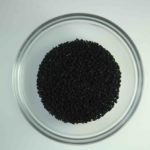
Nigella Seeds are black, aromatic seeds and, in terms of flavor, they are close to Thyme or Oregano. Nigella Seeds are commonly used in pickling, and on breads; these are the black seeds sprinkled on Naan. Here are some recipes that use Nigella Seeds – Achari Chicken and Achari Eggplant.
Poppy Seeds
Poppy Seeds can be dark or light colored and the light-colored ones are used in Indian cuisine. The taste of the seeds ranges from nutty, sweet and almond-like for the dark Poppy seeds, to a lighter more subtle flavor for the white seeds. Poppy seeds are roasted and ground to act as a thickener for curries and kormas and are also sprinkled over breads such as Naan. Poppy seeds stay good in the fridge in an airtight container and can be stored for longer than a few months in the freezer. These seeds are rich in protein and oil and, as with many other spices, their flavor is enhanced by dry-roasting.
Paprika
Paprika is ground red bell pepper. Paprika has also a sweetness to it, as well as a bit of a smoky flavor. There are actually several types of paprika. The average supermarket brands are typically quite mild and used mostly just for color. But real Paprika is far more varied – besides Spanish smoked Pimenton, there’s a whole spectrum of traditional Hungarian Paprika, from sweet to hot, with some being more fruity or earthy and very flavorful. Note that Spanish Pimenton is given the misnomer “paprika,” even though it has a far stronger flavor.
While I do use Paprika for color in many dishes, the best choice for the typical curry dish is Kashmiri Chili Powder, which is readily available in Indian or other ethic supermarkets.
Star Anise
Star Anise has a licorice-like flavor, and could easily be among the prettiest spices. I enjoy adding it to dishes solely for the presentation value. It is also one of the spices that can be added to Garam Masala. Note that any spice added to Garam Masala is perfect for cooking delicious, aromatic Pulaos.
Saffron
Saffron is the stigma of a flower and adds a deep orange color to curries, rice dishes and desserts. Saffron is very strong and it is generally recommended to add small quantities to a dish. Saffron is added to Biryanis to add aroma and flavor, and adds a heavenly flavor to desserts. You should be aware that Saffron adds its’ distinctive yellow color to any dish.
Turmeric
Turmeric is earthy and bitter and provides a host of health benefits. It has a muted flavor and is often used to add a bright, yellow color. Turmeric powder also acts as a thickener for sauces.

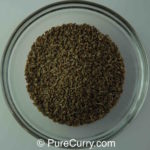
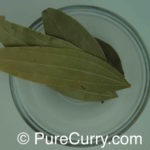
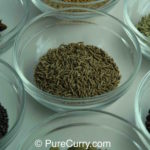


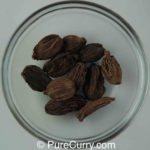
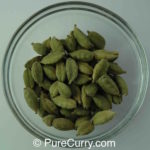
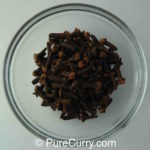
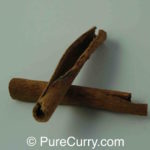
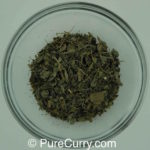
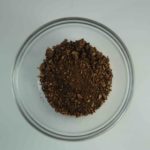
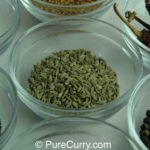
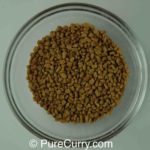
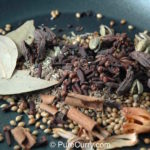
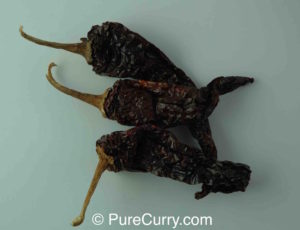
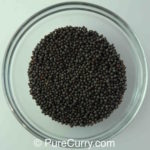
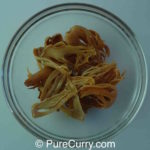
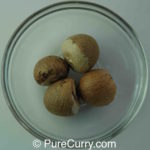
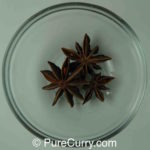
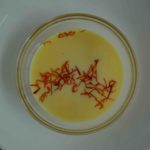
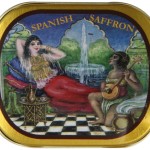
Avi — This was a fabulous and informative read!! What I especially liked (and lacked) was the health benefits of some of these spices. For those of us who have learnt cooking at our Mom or Grans’ knees, we’re often too guilty of not enquiring about the science behind the method. I think there’s great wealth in this and in contrast, ALL my French friends here in Paris take great pride in knowing their ingredients, how-when-why they’re mixed, the temperature at which to cook them, for how long, which wine can complement the food and why, etc. When we make these fundaes visible and widely understood for Indian cuisine, it can easily hold its own in the world of “haute cuisines”.